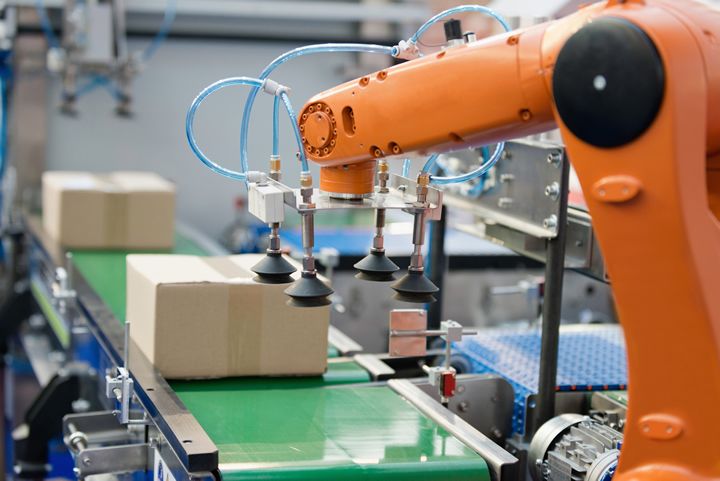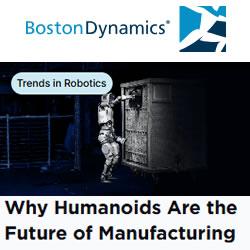In this new era of human-centric automation, robotics and intelligent systems are being designed to elevate the supply chain, creating supply chains that are not only faster and more resilient but also safer, more inclusive, and deeply human.
 Designing Human-Centric Automation: The Next Evolution of Robotics in the Supply Chain
Designing Human-Centric Automation: The Next Evolution of Robotics in the Supply Chain

Anupam Bandyopadhyay
For decades, automation has been seen as a replacement strategy with machines taking over what people once did. But a quiet shift is underway. The most forward-looking companies no longer view automation as a substitute for human labor, but as a collaborator that extends human capability. In this new era of human-centric automation, robotics and intelligent systems are being designed to elevate the supply chain, creating supply chains that are not only faster and more resilient but also safer, more inclusive, and deeply human.
When Efficiency Meets Empathy
Automation once pursued efficiency at any cost. The goal was speed, precision, and consistency, often at the expense of the people working alongside the machines. Yet, as industries mature, a new philosophy has emerged, one that treats human experience as a performance metric in its own right.
Imagine a warehouse where robots don’t replace workers; instead, they move like skilled dance partners. This looks like robots lifting heavy loads, fetching inventory, or sequencing shipments while humans oversee, direct, and problem-solve. This is no longer a vision of the distant future. It’s happening now.
At companies like Ocado and Amazon, autonomous mobile robots (AMRs) and automated storage and retrieval systems (ASRS) are being designed with human ergonomics in mind. They handle the physical tasks like lifting, bending, and carrying, while humans focus on quality control, creativity, and complex decision-making. The result is a symphony of shared labor where human judgment meets robotic precision.
Automation has traditionally targeted throughput and cost, but as supply chains face labor shortages, companies are now prioritizing worker experience. When employee experience becomes a KPI, automation shifts from replacing tasks to supporting workers, which reduces fatigue and improves decision-making capabilities. Metrics evolve to include engagement and well-being alongside utilization. A human-centric culture puts workforce advancement and comfort on equal footing with efficiency. This approach turns automation into a long-term strategy for talent retention, making worker empowerment a key competitive edge.
The Rise of Ergonomic Intelligence
Human-centric automation is about more than simply making machines smarter. It’s about designing them to understand and respect human limits. In the same way that good architecture adapts to the way people move through space, robotics now adapts to the way people move through work.
Collaborative robots, often called cobots, are programmed to operate safely around humans, using sensors to detect proximity and adjust their movements accordingly. At BMW’s manufacturing plants, cobots assist with assembly tasks that require repetitive lifting or precision alignment. The robots don’t replace technicians; they stand beside them, sharing the workload. Workers report less fatigue, fewer injuries, and higher job satisfaction.
This shift has profound implications for workforce design. When technology supports rather than supplants human capability, it transforms the nature of work itself. Employees evolve from operators into orchestrators, guiding the flow of automated systems while engaging in higher-value problem-solving. The workplace becomes less about endurance and more about insight.
Automation as a Safety Net, Not a Threat
One of the most overlooked benefits of automation is its potential to enhance safety. In logistics, injuries often stem from repetitive strain, heavy lifting, or working in hazardous environments such as cold storage or high-traffic loading areas. Intelligent robotics systems can absorb those risks.
Consider DHL’s deployment of robotic exoskeletons that help warehouse staff lift heavy items with minimal strain. The exoskeletons act like wearable support structures, reducing physical load by up to 30 percent. Workers not only stay safer, but also sustain longer, healthier careers. It’s a reminder that automation can be both protective and empowering when designed with empathy.
For instance, a leading apparel distributor introduced an Automated Storage and Retrieval System (ASRS) in its warehouse to minimize manual lifting and reduce repetitive strain injuries among employees. Before this implementation, staff members were required to walk extensively and lift heavy items from various shelving levels during the picking process.
The Goods-to-Person (G2P) robotic system uses robots to pick inventory on physical totes from ASRS and transport these totes to picking stations at waist height. This design removes the need for ladder climbing and decreases bending or twisting movements, which can lower the risk of musculoskeletal injuries.
Post-implementation, the client reported:
-
40% reduction in recordable workplace injuries
-
30% improvement in order-picking efficiency
-
15% increase in employee retention within the first year
Employee satisfaction surveys post-implementation indicated a significant increase in morale, as staff members perceived their tasks to be less physically strenuous and more supported by technology.
The Emotional Architecture of Work
Human-centric automation also addresses an emotional truth: people want their work to matter. When technology strips away meaning, disengagement follows. But when automation is designed to remove drudgery and unlock creativity, it restores purpose to the workplace.
Think of it as emotional architecture, the way systems shape how people feel about their roles. When workers collaborate with robots that amplify their strengths, they become participants in innovation rather than its casualties. This emotional connection improves retention and builds a culture of adaptability, something no algorithm can replicate.
One study by MIT’s Task Force on the Work of the Future found that employees working with collaborative robots reported higher levels of satisfaction and autonomy than those using traditional industrial automation. The reason was simple: they felt valued, not replaced.
The Next Evolution of Collaboration
The evolution of robotics mirrors the evolution of work itself. Early industrial robots were like isolated specialists, robust but rigid, focused on a single repetitive motion. The next generation is more like adaptive teammates, responsive, perceptive, and capable of learning from context.
As AI becomes integrated into robotics, the relationship between humans and machines will become even more symbiotic. Systems will not only understand what needs to be done but also who is best equipped to do it, whether human or robot, and dynamically allocate tasks accordingly. In this sense, automation becomes orchestration, guided by both data and empathy.
Where Technology Learns Humanity
Human-centric automation is not about replacing people with perfection. It’s about creating systems that mirror the best of human qualities—adaptability, awareness, and care. When robotics and AI are designed through that lens, they become tools of empowerment, not displacement.
The next frontier of the supply chain won’t be defined by how much we automate, but by how thoughtfully we do it. Those who design with humanity at the center will lead not only in productivity, but in trust, loyalty, and long-term resilience.
Automation can make work faster, but human-centric automation makes it better.
 Anupam Bandyopadhyay is a senior supply chain and technology leader with over 18 years of global experience in warehouse design, logistics, and automation. As a senior manager and design lead at a global supply chain software company, he has led transformative projects for Fortune 500 and multi-billion-dollar enterprises across retail, manufacturing, and entertainment. His expertise spans WMS, TMS, robotics, digital twins, and AI-driven optimization, driving measurable gains in efficiency, accuracy, and scalability. A recognized thought leader, Anupam serves on industry advisory boards, mentors emerging professionals, and speaks at international conferences on AI, robotics, and the future of human-centric, sustainable supply chains.
Anupam Bandyopadhyay is a senior supply chain and technology leader with over 18 years of global experience in warehouse design, logistics, and automation. As a senior manager and design lead at a global supply chain software company, he has led transformative projects for Fortune 500 and multi-billion-dollar enterprises across retail, manufacturing, and entertainment. His expertise spans WMS, TMS, robotics, digital twins, and AI-driven optimization, driving measurable gains in efficiency, accuracy, and scalability. A recognized thought leader, Anupam serves on industry advisory boards, mentors emerging professionals, and speaks at international conferences on AI, robotics, and the future of human-centric, sustainable supply chains.
The content & opinions in this article are the author’s and do not necessarily represent the views of RoboticsTomorrow
Featured Product

